Michelle Schoffro Cook's Blog, page 12
October 20, 2017
#WhyIWrite
 Today is National Day of Writing. Because #WhyIWrite is trending on Twitter I thought I'd share my story. One day a man who was like a second father to me was rushed to the hospital for an emergency bypass. No one told me about his health ordeal but I awoke from a terrifying nightmare in which he grabbed his heart, fell onto the floor dying, reaching out his hand to me. When I called his home asking if he was okay, the woman who answered the phone barked at me "who told you?" I said no one. I had dreamt it.
Today is National Day of Writing. Because #WhyIWrite is trending on Twitter I thought I'd share my story. One day a man who was like a second father to me was rushed to the hospital for an emergency bypass. No one told me about his health ordeal but I awoke from a terrifying nightmare in which he grabbed his heart, fell onto the floor dying, reaching out his hand to me. When I called his home asking if he was okay, the woman who answered the phone barked at me "who told you?" I said no one. I had dreamt it.
Ron was in the hospital six hours away so I immediately got in my car and started driving, even though I knew he would be recovering (I hoped) from surgery and unable to see anyone. Tears pouring from my eyes, devastated that I might lose this man who was so dear to me and between an endless outpouring of tears, I wrote how much I cared for him and how he had helped me more than he ever knew. Once completed I left the letter with the nurse who gave it to him. In critical condition, the hospital staff informed me that they weren't sure he was going to make it and that they weren't allowing any visitors for a few days.
A few days later I went back to the hospital. Ron's health was still quite fragile but he had instructed the nursing staff to bring me into his room when I arrived. Ron proceeded to tell me that for the last few days he couldn't even remember who he was, felt absolutely horrendous, and wasn't sure he was going to make it. He read my message over and over again once he became conscious and told me that my words had saved his life because they had brought him hope.
From that day onward I knew exactly what I wished to spend my life doing: sharing the message of hope and healing. For me that meant sharing the message of hope and healing that natural medicine offers because it saved my life. Today, countless people I don't even know have written to me to tell me my books or articles changed their life and some even informed me that my writing had saved their life. I am still truly humbled and honored by these words that loved ones and strangers alike share with me and that's #whyIwrite.
I've just launched my twentieth book--THE CULTURED COOK: Delicious Fermented Foods with Probiotics to Knock Out Inflammation, Boost Gut Health, Lose Weight & Extend Your Life. This full-color book is jam-packed with delicious recipes on how to make fermented foods, ranging from vegan cheeses and cheesecakes to kimchi and saurkraut. Be sure to check it out.
Dr. Michelle Schoffro Cook, PhD, DNM, RNCP is an international best-selling and 20-time published book author whose works include: Be Your Own Herbalist: Essential Herbs for Health, Beauty & Cooking.
Copyright Michelle Schoffro Cook. All rights reserved. No use of this article, in whole or in part, may be used without the prior written permission of the author. This article is provided for educational purposes only and is not intended to diagnose, treat, cure, or prevent disease.
September 8, 2017
Vaginal Yeast Infection Remedy

If you're suffering from a vaginal yeast infection, you'll be happy to know relief is at hand. This simple remedy works marvellously. Keep in mind that you should only use the highest quality and potency of essential oils as most are contaminated with harmful ingredients or contain inferior grade oils. I use doTerra essential oils as they are the highest quality and most therapeutic oils of the many dozens of essential oil brands I've tried.
3 drops tea tree oil
1 teaspoon olive oil or sweet almond oil
1 tampon
1. In a small saucer, mix the tea tree oil and olive or sweet almond oil together until combined.
2. Unwrap and roll a tampon into the oil mixture until saturated.
3. Insert into the vagina and leave in place over night. Use any remaining oil over the exterior of the vaginal area.
4. Repeat twice a day (daytime and nighttime) for a week.
Dr. Michelle Schoffro Cook, PhD, DNM, is the international best-selling author of 60 Seconds to Slim, Be Your Own Herbalist, and The Cultured Cook.
March 16, 2017
The Proven Remedy that Fights 6 Kinds of Cancer

Myrrh—the resin from the small, thorny myrrh tree—has an ancient history of use as incense, in meditation rituals, as well in medicinal use for many ailments, from fighting infections to healing skin conditions. Modern research is proving what the ancients seem to have known: that myrrh is potent natural medicine. And, we’re learning it has even more medicinal properties than originally believed, including potent anti-cancer properties.
Research in the medical journal Medical Diversity assessed the power of myrrh resin (also known as myrrh essential oil) against six kinds of cancer (lung, cervical, breast, skin, kidney, and colon). The myrrh extract showed significant anti-cancer activity against all six forms of cancer, suggesting potential for use of the resin or its active compounds in the treatment of cancer.
New research in the journal Nutrition & Metabolism found that compounds in myrrh resin work by inducing cancer cell death—a process known as apoptosis. The researchers found that the natural compound known as guggulsterone (GS), which has a lengthy history of use in Ayurvedic medicine in India, was at least part of myrrh resin’s potency against cancer. They indicate that myrrh resin is now undergoing additional research as well as development as an anti-cancer drug.
Research published in the journal Evidence-Based Complementary and Alternative Medicine also shows that myrrh essential oil can protect the nervous system against specific free radicals that would otherwise cause damage. Myrrh resin contains the natural compounds known as sesquiterpenes that have been found to cross the blood-brain barrier, which could account for some of the remedy’s ability to help with nervous system health.
Myrrh resin/essential oil has many other healing uses:
-A drop or two can be added to toothpaste or baking soda for brushing the teeth and for its antibacterial effects that contribute to oral health.
-A drop or two can be added to your favorite skin cream to soothe the skin and promote a healthy complexion.
-Myrrh essential oil can be diffused to uplift mood.
-A drop or two can be added to moisturizer to help reduce the appearance of wrinkles.
While there are many myrrh essential oil products on the market, most have been diluted with cheaper oils or contain harsh solvents used in the processing of them so it is important to choose an oil that has third-party laboratory testing. Sadly, few companies have done this type of research so it can be difficult to find suitable products. As most of the products are not pure enough for internal use, it is best to follow package instructions.
And, regardless how you choose to use the oil, myrrh essential oil is best diluted as it is quite strong. Simply dilute a couple of drops in an carrier oil like sweet almond or fractionated coconut oil (a liquid version of coconut oil).
Always conduct a 48-hour skin test of the myrrh oil diluted in the carrier of your choice prior to more extensive use. Avoid during pregnancy.
March 3, 2017
3 Proven Natural Remedies for a Sore Throat
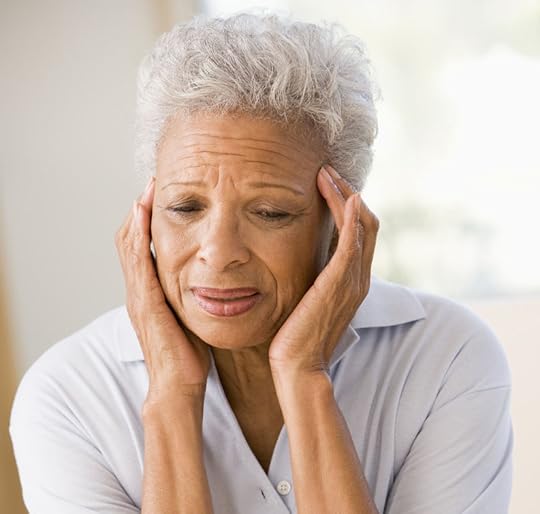
We’ve all experienced the dreaded sore throat--that first sign of some nasty virus that has invaded our body. It’s that moment we wait with baited breath that it won’t turn into some awful viral infection that takes over our body for days or even weeks. To help you eliminate a sore throat and possibly even kill the viral (or sometimes bacterial) infection behind it, I’ve compiled some of the best natural remedies for a sore throat:
The herb thyme (Thymus vulgaris) is perhaps the best natural remedy for sore throats, particularly when it is mixed with some raw, unpasteurized honey. But, even vegans can benefit from thyme’s natural throat-soothing and anti-microbial properties. Natural compounds known as flavonoids have been linked to thyme’s natural cough suppressant and anti-inflammatory effects. To make a sore throat-eliminating tea, add two teaspoons of crushed fresh or dried thyme leaves to one cup of boiled water. Let steep for 10 to 15 minutes, strain and drink three times daily. You can also mix two drops of a high quality thyme essential oil into a teaspoon of honey, combine well, and hold this honey-thyme mixture in your mouth, allowing it to slowly dissolve. Repeat up to three times in a day, as necessary to soothe your throat.
The oil extracted from the herb oregano (Origanum vulgare) is highly anti-infectious, and unlike antibiotics that only work on bacterial infections, oregano oil works against both bacterial and viral infections alike, making it perfect for sore throats of a viral nature or those that are the result of Streptococcus bacteria (think strep throat). In a study published in Biomed Research International, researchers found that both thyme and oregano had significant antibacterial activity against both gram positive and gram negative bacteria linked to sore throats. Both the alcohol extracts known as tinctures and the essential oil of the oregano plant is highly antiseptic, but I find the oil to be the most potent. Mix a two to three drops of high quality, undiluted oregano essential oil intended for internal use in a spoonful of olive oil, swish it around in your mouth and swallow to help ease your sore throats.
The herb lemon balm (Melissa officinalis) is a potent natural antiviral remedy backed by research. In a recent study against the bird flu virus H9N2 researchers found that the herb prevented the virus from replicating, which is how the virus spreads and infects people or birds. In this study researchers obtained the antiviral effects from the essential oil of the plant but results can likely be obtained with an herbal infusion (tea), tincture, or essential oil. Make a tea from 1 teaspoon of dried herb per cup of boiled water. Allow to steep for 10 to 15 minutes, strain and drink three times daily. Follow package instructions for Melissa tincture. For the essential oil, mix two drops of a high quality, undiluted Melissa oil in a teaspoon of honey or olive oil and swish or dissolve in your mouth. Repeat up to three times daily.
I am thrilled to announce that I am creating a team of people from around the world who are helping me to spread the healing power of aromatherapy that goes far beyond typical bath and body uses. Are you looking to get wholesale discounts on high quality essential oils, start a fulfilling career helping people, or earn money while doing meaningful work? You've come to the right place. You don't need any experience at all. Even if you just want to purchase quality oils at wholesale prices, I'll help you get started right away. If you want to build a business selling essential oils and related products, I'll help you from start to success. I'll even coach you on how to effectively use essential oils through my exclusive Facebook group. Learn more.
Dr. Michelle Schoffro Cook, PhD, DNM, RNCP is an international best-selling and 20-time published book author whose works include: Be Your Own Herbalist: Essential Herbs for Health, Beauty & Cooking.
Copyright Michelle Schoffro Cook. All rights reserved. No use of this article, in whole or in part, may be used without the prior written permission of the author. This article is provided for educational purposes only and is not intended to diagnose, treat, cure, or prevent disease.
February 26, 2017
4 Proven Natural Remedies for Anxiety

If you suffer from anxiety disorder or occasionally experience panic attacks you might want to consider 4 natural remedies that have been found to be effective in treating these conditions, without the side effects of anti-anxiety drugs. Here are 4 essential oils that are proven anti-anxiety remedies:
In a study published in the medical journal Phytotherapy Research scientists found that inhaling the essential oil of bergamot had a pronounced anti-anxiety effect. According to their research, bergamot seemed to work by reducing the body’s stress hormone production. Excessively high levels of stress hormones are contributing factors in anxiety. Additionally, bergamot was found to increase levels of gamma-aminobutyric acid (GABA) in the brain.
In a study published in The Journal of Ethnopharmacology researchers found that when animals breathed the scent of lavender essential oil, they had significantly less anxiety. The reduction was comparable to the effects of the drug diazepam. Both males and females experienced a reduction in anxiety when exposed to lavender essential oils but the effect was more pronounced in females. There are no known negative side-effects of smelling lavender essential oil on a regular basis. Compare that to diazepam which has a lengthy list of side-effects including: blurred vision, drowsiness, constipation, dizziness, fatigue, headaches, mood problems, memory loss, hallucinations, slurred speech, trouble walking, trouble urinating, disinterest in sex, tremors, and sleep disturbances.
Another study published in the journal Pharmacology, Biochemistry, & Behavior, researchers assessed the effects of the essential oil rose in contrast to the drug diazepam and, as with the other essential oils, found it to have a similar effectiveness. That’s good news for anxiety sufferers interested in alternatives to the drug options.
In a study published in the journal Natural Product Research, scientists explored the anti-anxiety effects of vetiver essential oil compared to the drug diazepam and found the results were comparable. Vetiver demonstrated equivalent anti-anxiety effects to the drug.
Essential oils tend to be absorbed quickly into the body via the nasal membranes, thereby affecting brain responses to anxiety or other conditions. Choose the highest quality essential oils. Avoid any that have been diluted with other oils (a common practice among many suppliers, particularly for rose essential oil which tends to be quite expensive). Avoid “fragrance” oils which are actually synthetically created and offer no therapeutic value and may actually be detrimental to your health.
There are different ways to obtain the anti-anxiety benefits of these essential oils, such as using the oils on a handkerchief and breathing in the scent throughout the day, or using a diffuser or nebulizer. Many diffusers involve heat which can chemically alter the oils so it is preferable to choose options that do not involve heating the oils. Nebulizers are devices that spray microscopic particles of essential oils into the air where they are breathed. Either type of device can be found in many health food stores.
If you are using essential oils internally, use only the highest quality oils (most are garbage!) and only in the dose recommended. Additionally, the anti-anxiety effects of the oils can be obtained through repeated daily exposures to the scent of the oils for at least a few minutes each or by placing a drop or two in the palms of your hands, rubbing the oil into your skin and inhaling the scent. It is not necessary to use all 4 of the oils. Choose the one you are most drawn to, is most accessible, or best fits your budget. Consult your physician before discontinuing any medication.
I am thrilled to announce that I am creating a team of people from around the world who are helping me to spread the healing power of aromatherapy that goes far beyond typical bath and body uses. Are you looking to get wholesale discounts on high quality essential oils, start a fulfilling career helping people, earn money while doing meaningful work, and get essential oil coaching from a recognized leader (me!) in the field through my exclusive Facebook group? You've come to the right place. You don't need any experience at all. Even if you just want to purchase quality oils at wholesale prices, I'll help you get started right away. If you want to build a business selling essential oils and related products, I'll help you from start to success. Learn more.
Dr. Michelle Schoffro Cook, PhD, DNM, RNCP is an international best-selling and 20-time published book author whose works include: Be Your Own Herbalist: Essential Herbs for Health, Beauty & Cooking.
This article is provided for educational purposes only and is not intended to diagnose, treat, cure, or prevent disease.
February 16, 2017
4 Reasons to Love Lavender Essential Oil

I visited an organic lavender farm a few summers ago. About a half a mile down the road I knew I was close as I could smell the fragrance wafting through the air. The rolling hillside was full of stunning, silvery-green and purple lavender plants. While I’ve never been to France, I imagined this is what the French countryside must look and smell like. I felt immediately transported to a peaceful place. How much was linked to the actual aromatic effects of lavender or the natural beauty of it in this lovely environment, I’ll never know. Either way, it was an experience to remember.
While lavender is an obvious visual and olfactory indulgence, its value goes far beyond these sensory experiences. The plant has a long and illustrious history as traditional medicine in many cultures. Lavender use has been traced back at least 2500 years, when it was used for mummification and perfumery by the ancient Egyptians, Phoenicians, and Arabs. Ancient Romans are also believed to have used lavender for cooking, bathing, and scenting the air. Today, science is revealing the incredible properties lavender possesses to reduce depression, premenstrual syndrome (PMS) and anxiety, as well as aiding insomnia and repelling insects. While lavender has many uses, here are some of my favorites:
1. Depression 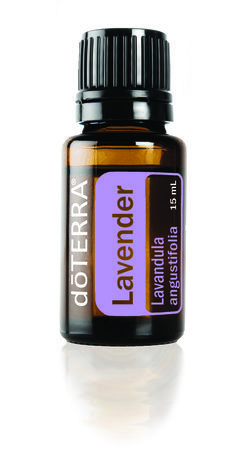
A joint Canadian and Iranian study compared the effects of a medication for depression to drinking tea made from lavender flowers. The researchers found that the lavender was slightly more effective than the anti-depressant drugs without any of the dangerous side effects often present with these types of drugs. The researchers concluded that lavender might be used as an adjunct to anti-depressant drugs or on its own to assist with symptoms of depression. The study participants drank two cups of an infusion made with lavender daily. This can be made by adding two teaspoons of dried flowers to boiled water and letting it sit for 10 minutes before straining and drinking the tea. Alternatively add one drop of lavender essential oil to a glass of warm water, stir and drink, three times daily. Of course, never discontinue any medications without consulting your physician.
2. Insomnia
Lavender is a traditionally-used insomnia remedy. Renowned herbalist and author of The Green Pharmacy, James Duke, recounts stories of British hospitals using lavender essential oil in patients’ baths or sprinkled onto bed clothes to help them sleep. To use in a bath sprinkle 5 to 10 drops of lavender essential oil under the water as the tub fills to allow the oils to disperse. Alternatively, place a heaping tablespoon of dried lavender flowers in cheesecloth, tie into a bundle and allow the flowers to infuse in the bathwater while soaking.
3. Mosquito Repellent
In a South African study comparing the effects of lavender essential oil to DEET-based tick repellents, lavender showed comparable results to the DEET sprays. At a 5 percent concentration the insect-repellent results of the lavender oil lasted for 40 minutes while at a 10 percent or higher concentration of the essential oil, the results lasted for two hours. Add 10 to 20 drops of lavender essential oil to a dollop of your favorite unscented cream and apply before heading outdoors.
4. PMS Symptoms
A Japanese study published in the journal BioPsychoSocial Medicine found that inhaling the scent of lavender for ten minutes had a significant effect on the nervous system of women suffering from premenstrual symptoms. It especially decreased feelings of depression and confusion. Add a few drops of lavender essential oil to a clean handkerchief and deeply inhale for at least ten minutes. Alternatively, massage a couple drops of lavender essential oil onto your abdomen.
Using Lavender Essential Oil
Choose only high quality, pure, undiluted lavandula angustifolia (true lavender) purchased from a reputable supplier. I like and use doTerra essential oils as they are pure, undiluted, and ethically-sourced. Many varieties of lavender essential oils use less therapeutic species of lavender, dilute the essential oil in a cheaper carrier oil, or even add synthetic esters to increase the volume of these compounds, resulting in an inferior oil lacking in therapeutic value.
I am thrilled to announce that I am creating a team of people from around the world who are helping me to spread the healing power of aromatherapy that goes far beyond typical bath and body uses. Are you looking to get wholesale discounts on high quality essential oils, start a fulfilling career helping people, or earn money while doing meaningful work? You've come to the right place. You don't need any experience at all. Even if you just want to purchase quality oils at wholesale prices, I'll help you get started right away. If you want to build a business selling essential oils and related products, I'll help you from start to success. I'll even coach you on how to effectively use essential oils through my exclusive Facebook group. Learn more.
Dr. Michelle Schoffro Cook, PhD, DNM, RNCP is an international best-selling and 20-time published book author whose works include: Be Your Own Herbalist: Essential Herbs for Health, Beauty & Cooking.
Copyright Michelle Schoffro Cook. All rights reserved. No use of this article, in whole or in part, may be used without the prior written permission of the author. This article is provided for educational purposes only and is not intended to diagnose, treat, cure, or prevent disease.
November 11, 2016
Should You Actually Feed a Cold and Starve a Flu?

Most of us have heard the old adage, “feed a cold and starve a fever.” But have you wondered whether there is any truth behind the sentiment? Yale University professor and author of a new study published in the medical journal Cell had that thought. He wondered whether eating during a cold or flu would impact the immune system’s ability to fight the infection so he and his team of researchers set to work to put the strange saying to the test, not just with cold and flu viruses but other infections as well.
Does Eating Impact the Outcome in Food Poisoning?
First the researchers explored the effects of eating on mice suffering from food poisoning, or the bacterial infection known as Listeria monocytogenes to be more specific. Like you might expect the mice naturally stopped eating after they began experiencing symptoms of food poisoning. And, it worked: they survived. But the ones that ate died. The researchers found that glucose was the factor that determined their fate. It appeared that glucose during the infection influenced whether the animals lived or died.
Now for the Flu
Next, the researchers assessed the effects of eating on animals infected with the flu virus (A/WSN/33). This time the results were quite different. The animals that were force-fed glucose survived while those that didn’t eat died. In the case of the flu, animals that ate lived.
It’s hard to imagine that anything as simple as the decision to eat or fast during an infection could determine an outcome of life or death, but that is exactly what this study found.
Why Did Food Make Such a Difference?
When the researchers analyzed the brains of mice that died from either of the infections they found that different parts of the brain were affected by either the bacteria or the viruses. They believe that, depending on the type of infection, the body may have different needs (either for food or to fast).
Said lead study author, Ruslan Medzhitov: “Our study manipulated the ability of these mice to tolerate and survive infection without doing anything that had an effect on the pathogens themselves.” In other words, the animals were not give antibiotics or antiviral drugs or any other substances known to inhibit the infections. The only factor was whether or not the animals ate while they were infected.
While the research into eating during infections is young and still has not been conducted on humans it does give us something to consider. We still don’t know the outcome of eating or fasting on the common cold, but when it comes to the flu (or at least this particular strain) we now know that the adage is FALSE. Keep in mind that one of the defining characteristics of the flu is that it is accompanied with a fever. If the animal study is any indication, we should reconsider the notion of starving a fever if that fever is caused by a flu virus.
Dr. Michelle Schoffro Cook, PhD, DNM, ROHP is a celebrity nutritionist and an international best-selling and 20-time book author, whose works include: Be Your Own Herbalist, 60 Seconds to Slim, and The Ultimate pH Solution. Subscribe to her free e-news World's Healthiest News at http://www.DrMichelleCook.com. Follow her on Twitter, Facebook, Pinterest, GoodReads, and Instagram. Copyright Michelle Schoffro Cook. All rights reserved.
November 4, 2016
5 Great Herbs to Soothe Your Nerves
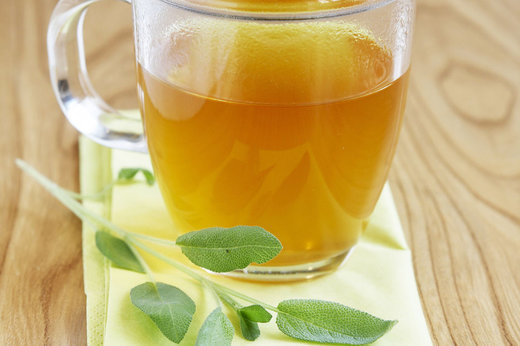
Are your nerves frazzled? Are you feeling stressed out? Or, are you suffering from migraines or neuropathy pain? Show your nerves some love with these soothing herbs:
Feverfew for Migraines and Headaches
This delicate flowering plant contains potent medicine, particularly when it comes to soothing the nervous system. Perhaps that is why it has been in use for over two thousand years, when Greek physician Dioscorides recommended feverfew for inflammation. Since then we’ve learned a lot about feverfew’s many other healing properties and its effects on the nervous system. Feverfew is an excellent headache and migraine remedy. If you’ve taken it when you’ve had a migraine and found that it didn’t work for you rest assured that it will work when used correctly. Feverfew doesn’t work in the same way as headache and migraine drugs—at the first sign of pain. Rather, the best way to take feverfew is daily over the course of a month to prevent headaches and migraines the following month. Research published in the Cochrane Database of Systematic Reviews concluded that feverfew can reduce the prevalence of migraines.
Feverfew for Neuropathy
If you’re suffering from neuropathy pain, which is a general term to describe disorders of the nervous system that cause pain, weakness, and numbness, you’ll be happy to learn that feverfew has been found effective for this set of conditions. In a study published in the journal Phytomedicine, researchers found that feverfew was as effective as the drug gapapentin (an anti-epileptic drug used in the treatment of neuropathic pain). Steep one teaspoon of the dried herb (leaves, flowers, and stems) in one cup of boiled water for 10 minutes. Drink three cups daily.
Nettles to Block Pain Signals
Nettles, or stinging nettles, as the plant is also called due to its fine hairs that impart a stinging sensation, have been found to interfere with pain signals transmitted through the nervous system, thereby reducing seemingly unrelated types of pain. In a study of nettles on osteoarthritis pain, researchers found that nettles reduced pain linked to the disease. Study participants also found that they needed fewer anti-inflammatory pharmaceutical drugs while taking nettles. Of course, you should consult your physician prior to reducing prescriptions. Dried nettles can be made into tea or added to soups and stews. Of course, they can be taken in capsule form as well.
Sage to Ease Stress and Balance Moods
While sage is increasingly known for its brain health and memory-boosting effects, this potent herb also plays a critical role in balancing moods. It appears to work by inhibiting an enzyme that breaks down the essential brain hormone known as acetylcholine. Acetylcholine is needed for mood regulation as well as many other brain and bodily functions. Drinking a few cups of sage tea on a daily basis may be just what you need to soothe your nerves and ease stress. Avoid using sage if you suffer from migraines. You can also take sage in capsule form as well.
St. John’s Wort to Alleviate Anxiety
While there are many excellent studies proving the effectiveness of St. John’s Wort against depression, few people realize that this lovely flowering herb can be used as a natural antianxiety medicine. Research published in the journal Phytotherapy Research found that the herb was effective in the treatment of anxiety. Use one teaspoon of dried flowers from this plant steeped in one cup of boiled water and drink three times daily to take advantage of St. John’s Wort’s antianxiety effects. Alternatively, take a tincture and follow package directions.
Valerian for Restlessness, Hyperactivity, and Anxiety
Valerian root has long been used for its antianxiety effects. Newer research shows that its potent antianxiety effects may be attributed at least in part to the compound valerenic acid. Other research shows that this powerful natural medicine taken in combination with lemon balm was helpful to reduce restlessness, hyperactivity, and impulsiveness in elementary school children after seven weeks of treatment with the herbs. Valerian is best taken in tincture format. Follow package instructions. For children use an alcohol-free extract known as a glycerite.
Consult your physician prior to using these herbs if you are suffering from any serious health condition or taking any pharmaceutical drugs.
Dr. Michelle Schoffro Cook, PhD, DNM, ROHP is a celebrity nutritionist and an international best-selling and 20-time book author, whose works include: Be Your Own Herbalist, 60 Seconds to Slim, and The Ultimate pH Solution. Subscribe to her free e-news World's Healthiest News at http://www.DrMichelleCook.com. Follow her on Twitter, Facebook, Pinterest, GoodReads, and Instagram. Copyright Michelle Schoffro Cook. All rights reserved.
October 31, 2016
4 Halloween Herbs for Year-Round Health

“Double, double toil and trouble. Fire burn and cauldron bubble,” chanted the witches of Shakespeare’s Macbeth as they added ingredients to their brew. While an eye of newt and tongue of frog may not interest you there are a few other herbs that are fitting for both Halloween and great health. Here are a few of my favorite Halloween herbs (based on their names) that are great year-round:
Devil’s Claw—With a name like “devil’s claw” pain wouldn’t dare mess with this herb. And that’s a good thing for anyone suffering from it. Devil’s claw is one of the most effective pain remedies I’ve used. It is effective for both joint and muscle pain, making it a good option for people suffering from arthritis, fibromyalgia, or other type of pain disorder.
Witch Hazel—Small twigs of this North American shrub, or tree (depending on how large it grows), are distilled to create a witch hazel solution that is effective for cleaning cuts and wounds. Some herbalists recommend it as an application for varicose veins or diffused into the air to aid nasal congestion.
Witch’s Aspirin—more commonly known as willow bark. The effective ingredient in aspirin was originally found in willow bark, which is also sometimes called white willow bark. The plant version offers excellent pain relief when prepared as a tea or tincture (alcohol extract). It is a natural blood thinner so check with your doctor if you’re taking prescription blood thinners.
Wolf Berry—More frequently referred to as goji berries, wolf berries are superfoods full of disease-fighting antioxidants. They are used in Chinese Medicine to improve eyesight, skin, and the kidneys and liver. They also have anti-cancer and anti-aging compounds, including: zeaxanthin, physalien, cyptoxanthin, sesquiterpenoids, triterpenes, and beta sitosterol. Like witch’s aspirin, wolf berries may thin blood so check with your doctor if you’re taking prescription blood thinners.
Learn more about healing with herbs in my new book: Be Your Own Herbalist: Essential Herbs for Health, Beauty, and Cooking.
Dr. Michelle Schoffro Cook, PhD, DNM, ROHP is a celebrity nutritionist and an international best-selling and 20-time book author, whose works include: Be Your Own Herbalist, 60 Seconds to Slim, and The Ultimate pH Solution. Subscribe to her free e-news World's Healthiest News at http://www.DrMichelleCook.com. Follow her on Twitter, Facebook, Pinterest, GoodReads, and Instagram. Copyright Michelle Schoffro Cook. All rights reserved.
October 27, 2016
6 Super-Healing Herbal Medicines to Start Using Now
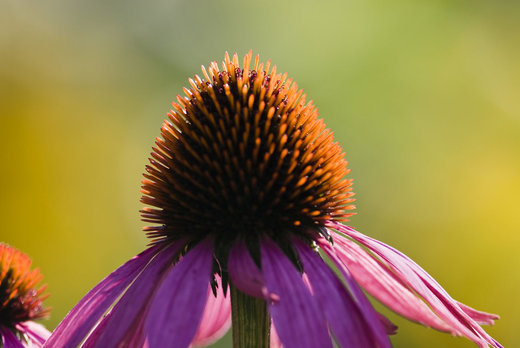
There are thousands of herbs, many with proven medicinal properties, and many still left unexplored by scientists. It is difficult to choose only six herbs to keep at home because there are so many amazing medicinal herbs, but the following help ensure that you have a fairly well-rounded stash for a variety of health needs. Herbs like dandelion, Echinacea, garlic, peppermint, and St. John’s Wort can be grown and used fresh. All of the following herbs can be used in dried form, ready to make your own herbal medicines and body care products. I’ve included the scientific names for the herbs since sometimes numerous different plants are sold under the same common name.
Dandelion (Taraxacum officinale)–Depending on which part of the plant is used, dandelion is one of the best kidney and urinary tract cleansers, or one of the best liver boosters. The leaves are best for the kidneys and urinary tract while the root is best for liver health.
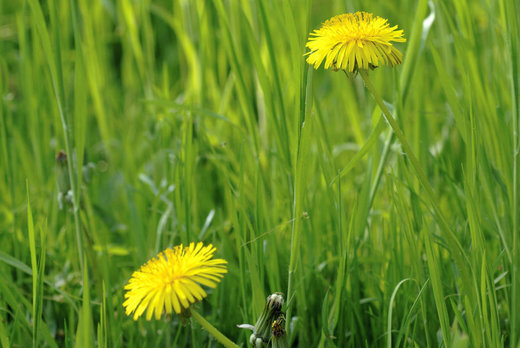
Echinacea (Echinacea, various species)—Most people grab Echinacea when they are suffering from a cold or flu, but it is a great herb to ensure lymphatic system health as well as boosting immunity. The lymphatic system is a network of nodes, tubules, fluid, and glands that “sweeps” toxins and byproducts of inflammation to keep the tissues healthy. Echinacea helps to lessen congestion and swelling and get the lymph fluid moving better.
Garlic (Allium sativum)—Garlic is one of the most versatile herbs. It can help fend off flu viruses, lower high blood pressure, prevent hardening of the arteries and lessen cholesterol buildup in the heart. Thanks to many studies on garlic’s medicinal properties, we also know it is antibacterial and antifungal.
Milk Thistle (Silybum marianum)—Milk thistle is an excellent liver tonic, and can help to alleviate indigestion, as well as to increase milk secretion in nursing mothers. He indicates that it is useful in the treatment of jaundice, cirrhosis, hepatitis, and liver poisoning.
Peppermint (Mentha piperita)—One of the most versatile herbs, peppermint is helpful for bad breath, sinus congestion, nausea, vomiting and digestive upset. It makes a delicious tea on its own but is also improves the taste of many less-than-tasty herbal teas.
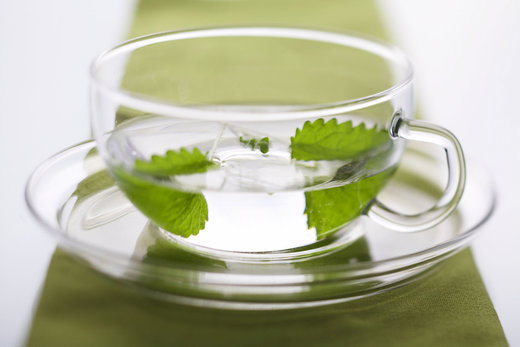
St. John’s Wort (Hypericum perforatum)—This misunderstood plant has been shown in many studies to be effective for mild to moderate depression, making St. John’s Wort a great herb to keep handy for the winter blues, hormonally-linked mood imbalances, or periods of sadness. Of course, if you’re suffering any type of severe depression or taking any medications you should always consult a physician.
Byline: Dr. Michelle Schoffro Cook, PhD, DNM, ROHP is a celebrity nutritionist and an international best-selling and 20-time book author, whose works include: Be Your Own Herbalist and 60 Seconds to Slim. Subscribe to her free e-news World's Healthiest News at http://www.DrMichelleCook.com. Copyright Michelle Schoffro Cook. All rights reserved.



